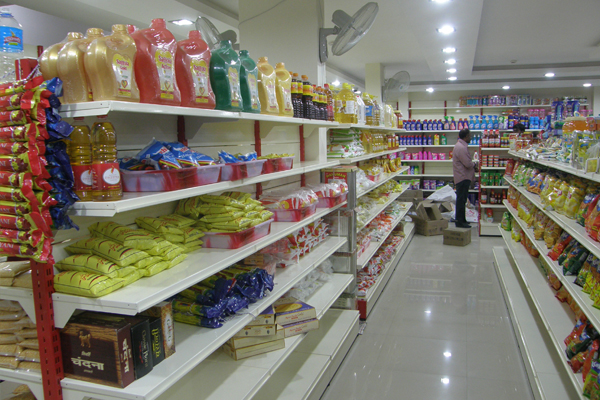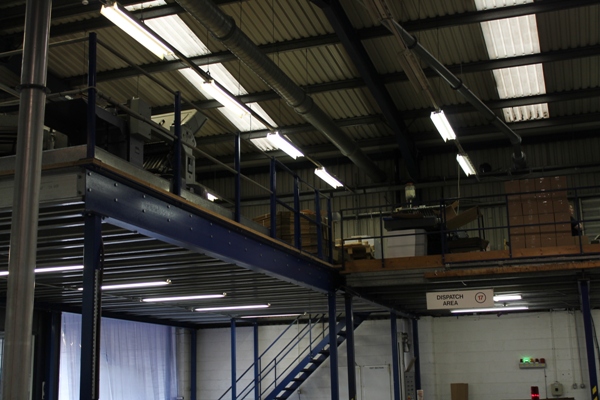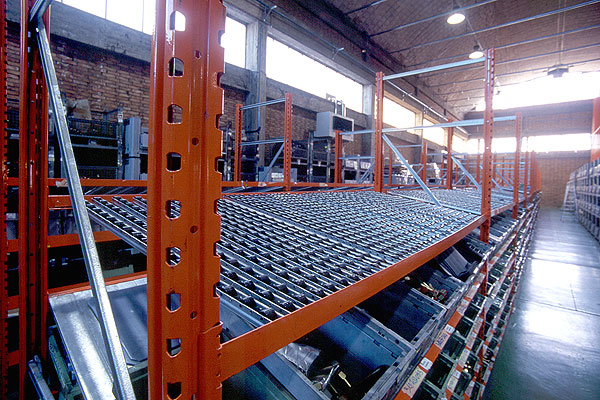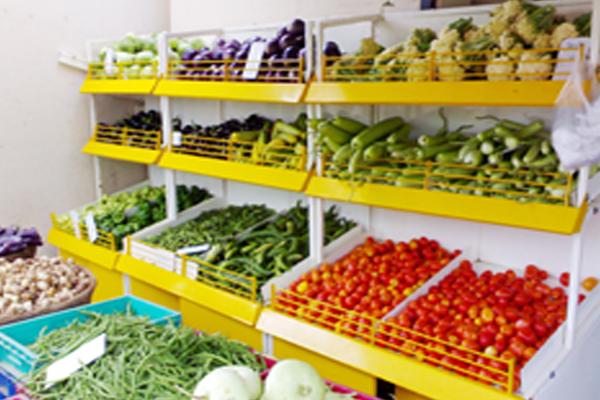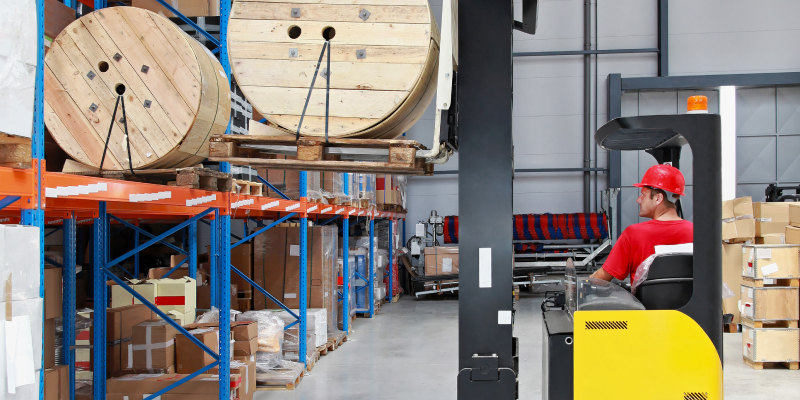Does the task of optimizing warehouse space overwhelm you? You’re not alone. The drive-in racking system can be a potential game changer for your storage problems. This article will clarify the complexities of these systems, their benefits, and how they can transform your warehouse operations. You’ll learn how to choose the perfect system that suits your needs, understand the installation process, and even how to maintain it for maximum efficiency. Get ready to turn your warehouse into a model of cost-effectiveness and productivity.
Understanding Drive-In Racking Systems
Drive-in racking systems, high-density storage solutions, replace beams with ledges or rails. They design blocks of cantilevered rails that shape spaces, making it easy for forklifts to put and retrieve items. The racks can rise to a height of 12m, accommodating numerous pallets. Each pallet has a backstop to avoid possible damage to the spine bracing from pushing pallets too far back.
Rack manufacturers categorize Drive-in racking systems into two main types:
- Single entry racks: These racks grant forklift access from one side.
- Double entry racks: These racks allow forklift access from both sides of the racking structure.
To load or unload pallets, the operator must enter the storage lane and drive to the back face of the storage bay. By removing aisles between rows of racks, these systems can store more pallets per square foot, giving more space to storage rather than travel aisles.
Due to limited load access, these systems serve particularly well in managing inventory with a low turnover rate, similar SKUs, and full pallet load selection. They feature a modular structural design, making them easy to assemble, reset, and maintain. They operate in two modes: drive-in racking, which has only one access aisle and operates on a last-in, first-out basis, and drive-through racking, which has both an entrance and exit, operating on a first-in, first-out basis.
On the same note, let’s explore the numerous benefits these systems offer in terms of efficiency and cost-effectiveness.
Benefits of Drive-In Racking Systems
Drive-in racking systems bring about a significant change in your warehouse operations by enhancing their efficiency and cost-effectiveness. Using these systems can transform how you use your space and manage inventory, all while significantly reducing labor and equipment costs.
Efficiency of Drive-In Racking Systems
Drive-in racking systems significantly boost your warehouse operations’ efficiency. Thanks to their unique design, these systems are especially useful for products with low turnover or non-perishable items with the same SKU. They grant you the power to tailor your warehouse layout by managing your entry and exit points, thus optimizing your operations.
The efficiency of drive-in racking systems also applies to logistics management. They offer:
- Full control over inventories, traffic, and service flow.
- Quick design reconfiguration for effortless extensions or alterations as required.
- Effective use of floor space, encouraging superior storage density.
These characteristics make drive-in racking systems cost-effective and unparalleled. With their efficiency and cost-effectiveness, drive-in racking systems transform warehouse operations.
Cost-Effectiveness of Drive-In Racking Systems
Drive-in pallet racks might appear costly at first glance, but they are a cost-effective long-term storage solution. This holds especially true for maximizing inventory in cool rooms, where every penny holds significance.
The cost-effectiveness of these systems escalates with their remarkable space optimization capabilities. Drive-in racking systems, by exploiting over 80% of the available space, present a financially astute choice.
Suppliers also propose a variety of additional methods to boost the functionality and efficiency of these systems. These include:
- Angled shelves that ease the pallet movement to the front thereby simplifying the loading and unloading process.
- Combination systems that can merge with other storage options, further enhance the versatility and cost-effectiveness of your warehouse storage solutions.
When you ponder the cost-saving benefits of drive-in racking systems, it becomes evident that picking the appropriate system to align with your specific warehouse needs is vital. But what factors should you bear in mind when choosing the perfect drive-in racking system?
A Rack Manufacturer’s Guide to Choosing the Right Drive-In Racking System
Choosing the right drive-in racking system for your warehouse is crucial. It goes beyond merely selecting any system. You must consider your pallet size, warehouse capacity, and the pallets you plan to store. These factors play a pivotal role in choosing a system that will serve your needs efficiently and cost-effectively.
Let’s examine the specific dimensions and design features of drive-in racking systems. Generally, these systems are designed to accommodate pallets that are 40 inches wide. The space between the vertical legs of the pallet guide angles measures 42 inches, and the pallet guide rails span three inches wide. This design leaves a one-inch space on each side of the pallet, ensuring a secure fit.
For a better understanding, here’s a breakdown of what a typical drive-in racking system includes:
- Structural Components: Sets of frames and vertical uprights that form the inner lanes.
- Support Features: Each lane has support rails on both sides, laid out at different levels.
- Operation: The forklift truck enters the lanes with the unit load lifted above the rail where it will be placed.
- Storage Capacity: This compact storage system allows as many SKUs as loading lanes, with depth and height dependent on the number of pallets to be stored.
Grasping these features is vital as they boost the efficiency and cost-effectiveness of your warehouse operations. For instance, the forklift truck’s operation within the system ensures smooth loading and unloading, enhancing overall operational efficiency.
Having familiarised yourself with these features, you are better prepared for the next phase – implementing your drive-in racking system in your warehouse.
Installing a Drive-In Racking System
When you plan your drive-in racking system, keep in mind the specific dimensions of your warehouse and the pallets you plan to store. Drive-in racks usually have upright heights of 16’ and 20’. However, the specifics of your warehouse and pallet can demand shorter vertical heights. This approach ensures a system that works efficiently and caters to your needs.
The strength of your system is another vital aspect to consider. Heavy-duty bracing, symmetrically attached to the drive-in rack, enhances its strength and load-bearing capacity.
Drive-in racks are typically tall, which boosts storage density.
After installing your drive-in racking system, maintaining it in good condition becomes important for sustained efficiency.
Maintaining a Drive-In Racking System
No doubt, drive-in racking systems provide excellent solutions, yet they also bring a unique set of challenges. For example, the last-in, first-out inventory approach may not be suitable for all product types. High traffic and tight spacing can make these systems vulnerable to forklift damage, leading to potential product loss if not properly managed. To access pallets that are not at the front of the rack, you may need to handle them twice. We should consider honeycombing – when operators do not deposit loads at the back of the racking system, resulting in unnecessary waste of storage space.
However, there’s a silver lining. The systems’ rack uprights, available in various thicknesses and widths, come with guide rails. These features actively lessen the damage to the racks and pallets and increase the safety of the retrieval and storage process. So, despite the challenges that drive-in racking systems pose, you need strong safety measures to address them.
Making the Most of Your Warehouse Space
A drive-in racking system could transform your warehouse, turning storage problems into a model of cost-effectiveness and productivity. It’s all about understanding the system, recognizing its benefits, and mastering the skill of selecting, installing, and maintaining it for maximum efficiency. Remember that a cost-effective, efficient warehouse isn’t a distant dream but a very achievable reality. So, why wait? As one of the best rack manufacturers in India, Donracks can help you make the most of your warehouse space. Contact us or visit our website for more details. As the saying goes, “Efficiency is doing things right; effectiveness is doing the right things.”
Frequently Asked Questions
How do you use drive-in racking?
Drive-in racking serves as a high-density storage system. This design lets forklifts reach the rack bays to reach the stored goods. The loading kicks off when operators put pallets of items on the rails at the system’s end. They then load newer products ahead of the older ones. Ensuring the load sits in the center between the rack uprights and lifting the pallet to the correct rail height before placing it in the rack is of utmost importance. Only use forklifts that are guaranteed to fit within the drive-in rack.
What are the components of drive-in racking?
Drive-in racking consists of several components. The upright frames bear the weight of the entire structure. The rails stretch the length of the system, providing a steady resting spot for pallets. To reinforce the bay structure, support arms and beams hold the rails. Horizontal braces distribute the force among the upright frames. The system connects together above the top load through top beams and braces. Rear braces at the back of each drive-in bay bind the system.
What is the disadvantage of the drive-in racking system?
Drive-in racking systems have certain constraints. They work on a Last-In-First-Out (LIFO) inventory approach, limiting the variety of products you can store. The continuous activity and confined areas enhance the likelihood of forklifts inflicting harm. Poor management can lead to lost products more efficiently. They may not suit every warehouse or every product type. Moreover, these systems can handle only one kind of product at a time as forklifts struggle to access goods directly.
What are OSHA requirements for warehouse racking?
The Occupational Safety and Health Administration (OSHA) outlines several rules for material storage in warehouses. They require materials stacked in layers to be secure, preventing potential slides, falls, or collapses. They also mandate that the weight of stored materials on building floors and structures shouldn’t exceed the maximum safe load limits. OSHA insists on clear aisles and passageways to guarantee the safe, unrestricted movement of material handling equipment and employees. They frequently refer to the equipment manufacturer’s installation and maintenance instructions or the industry standard ANSI/RMI MH16.1 requirements.
What types of businesses is a drive-in racking system best suited for?
Drive-in racking systems work excellently for businesses handling high volumes of identical SKUs. They prove particularly beneficial for businesses dealing with a small range of SKU items that don’t frequently change and aren’t time-sensitive. For instance, they are perfect for simultaneously moving large quantities of seasonal items. They also store pallets of the same size effectively. Industries such as automotive, famous for using these systems for tire storage, and manufacturing industries producing large or seasonal goods or components, can efficiently store and organize inventory using a drive-in rack system.
How much weight can a drive-in racking system support?
A few key factors influence the weight-bearing capacity of a drive-in racking system. One of these is the load beam capacity. This refers to the weight each pair of beams can support. Another is the upright capacity. This is the total weight the vertical frames can support. The distance between the beam levels and the total number of levels that need support determine this. The rack system’s anchoring features, like the slab, soil, and other factors, also need consideration. It’s important to consult a professional rack design engineer for safety reasons.
What is the ideal height for a drive-in racking system?
The ideal height of a drive-in racking system depends on the specific needs of the warehouse and the type of goods stored. Drive-in racking systems usually stand tall to maximize storage space. Standard heights for drive-in rack uprights are 16’ and 20’. However, they can be shorter. A system that stands taller than 21 feet requires 4-inch columns for extra strength. Always seek expert advice from a proficient rack design engineer to ensure the system’s safety.
What factors determine the cost of a drive-in racking system?
There’s no set price for a drive-in racking system. It varies based on several factors. The material type, whether it’s steel, wire mesh, plastic, or particle board, substantially impacts the cost. The system’s size, capacity, number of beam levels, and accessories also help decide the price. You may incur additional expenses should you choose to customize or add to the system. Other cost influencers include freight and installation fees, the number of pallet racks installed at once, and the use of project management services. For an accurate cost estimate, we recommend consulting with a rack design engineer or manufacturer.
How often should I inspect and maintain my drive-in racking system?
The frequency of inspection and maintenance for a drive-in racking system varies based on several considerations. However, a broad guideline suggests an annual check for these systems. If the potential for damage is high, monthly checks become necessary. For systems with a moderate potential for damage, schedule checks every quarter. And for systems with minimal damage potential, semi-annual checks should suffice. It’s beneficial to have a knowledgeable individual visually assess the system every week.

